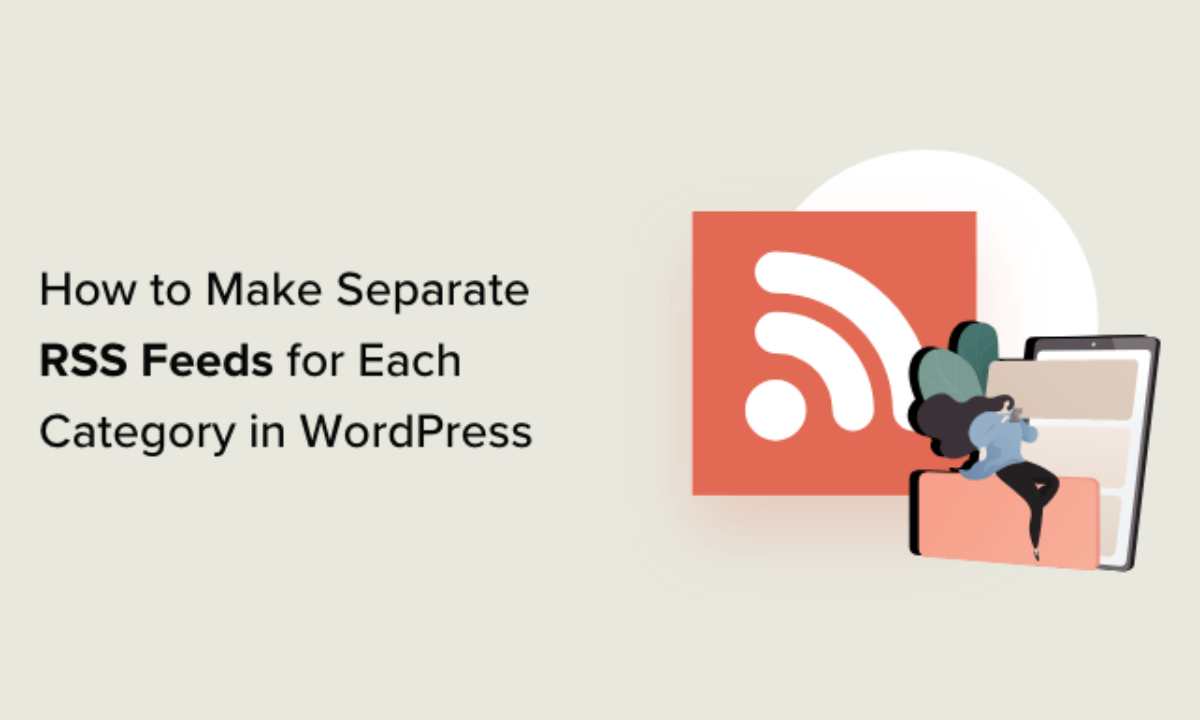How to Make Separate RSS Feeds for Each Category in WordPress
WordPress is a widely-used platform for managing content that enables bloggers and site proprietors to efficiently administer their content. A prominent attribute of WordPress is its capacity to produce RSS (Really Simple Syndication) feeds, granting followers the facility to remain informed about current material from their favored online platforms. WordPress inherently offers an all-encompassing RSS feed that comprises all the publicized content as a default setting. Nevertheless, in some instances, it may be advantageous to generate distinct RSS feeds for particular categories to accommodate unique audience predilections. Within the scope of this written discourse, we shall provide professional tutelage on the creation of distinct RSS feeds for each category in the WordPress platform.
Understanding RSS Feeds
What is an RSS Feed?
An RSS feed is a structure employed to disseminate periodic fresh content to recipients who have opted to receive it. This feature enables users to be notified automatically of any new information added to a website, without the need to manually access the website. RSS feeds are frequently employed by media outlets, web logs, and other information-focused platforms to disseminate their content and expand their target audience.
Importance of RSS Feeds in WordPress
The utilization of RSS syndication is of utmost importance for WordPress sites as it enhances user engagement and provides a user-oriented means for users to stay updated. Empowering users to select specific classifications guarantees that they obtain tailored information that matches their inclinations. There is a possibility that this could lead to increased engagement, repeated viewership, and ultimately, a more satisfied audience.
Setting Up Separate RSS Feeds
Install and Activate a Plugin
In order to generate distinctive RSS subscriptions for each classification in WordPress, it is imperative to utilize a plugin that delivers this feature. Numerous extensions are accessible for use, although a well-liked alternative is the “Plugin for Subscription to RSS Feeds Specific to Categories.” Commence the process by effectuating the installation and activation of the extension from the depository of WordPress plugins.
Configuring the Plugin
Once the plugin is activated, you can access its settings by navigating to the “Category RSS” tab in the WordPress dashboard. Here, you can configure various options such as feed title, feed length, and more.
Creating RSS Feeds for Categories
Selecting Categories
In order to generate individualized RSS feeds, it is imperative to designate the particular categories that are to be incorporated in each respective feed. “Within the configuration of the plugin, one is able to select their preferred categories through the act of marking the relevant checkboxes.” It is possible to designate numerous classifications to encompass within a sole feed or devise distinct feeds for each classification.
Configuring Feed Settings
Next, you can customize the feed settings to further refine the output. You can choose the number of posts to display, set a custom feed title, and add an optional description for each feed. These settings allow you to personalize the RSS feeds and align them with your website’s branding.
Customizing the Feed
If you want to add a unique touch to your RSS feeds, you can modify the feed template using the plugin’s advanced customization options. This allows you to control the appearance and structure of the feed content, making it more visually appealing and consistent with your website’s design.
Adding RSS Feeds to Your Website
Displaying Feeds in Sidebars
After setting up distinct RSS feeds, the opt to present them on your site lays in your hands. A widespread technique is to integrate the feeds into the sidebars of your website through WordPress widgets. By employing this strategy, guests can effortlessly discover and enlist in the particular group feeds that captivate them.
Placing Feeds in Posts or Pages
Another option is to embed the RSS feeds directly into your posts or pages. This is useful when you want to provide readers with relevant feeds within the context of your content. You can use shortcodes provided by the plugin to insert the feeds wherever you like.
Troubleshooting Common Issues
Feeds Not Updating
If you encounter issues with feeds not updating, ensure that you have published new content within the selected categories. Also, check that your plugin settings are correctly configured, and the plugin itself is up to date.
Invalid RSS Feed Errors
Sometimes, you may come across errors indicating that the RSS feed is invalid. This can occur due to various reasons, such as malformed feed templates or conflicts with other plugins. To resolve such issues, verify your feed settings and consult the plugin’s documentation or support forums for assistance.
Conclusion
Creating separate RSS feeds for each category in WordPress allows you to deliver targeted content to your audience and enhance their browsing experience. By utilizing the Category Specific RSS feed Subscription plugin or similar tools, you can easily configure and customize your feeds to match your website’s requirements. Implementing separate RSS feeds can increase user engagement, encourage returning visitors, and establish a loyal readership. Start exploring the possibilities of category-specific RSS feeds in WordPress to maximize the impact of your content.














Post Comment